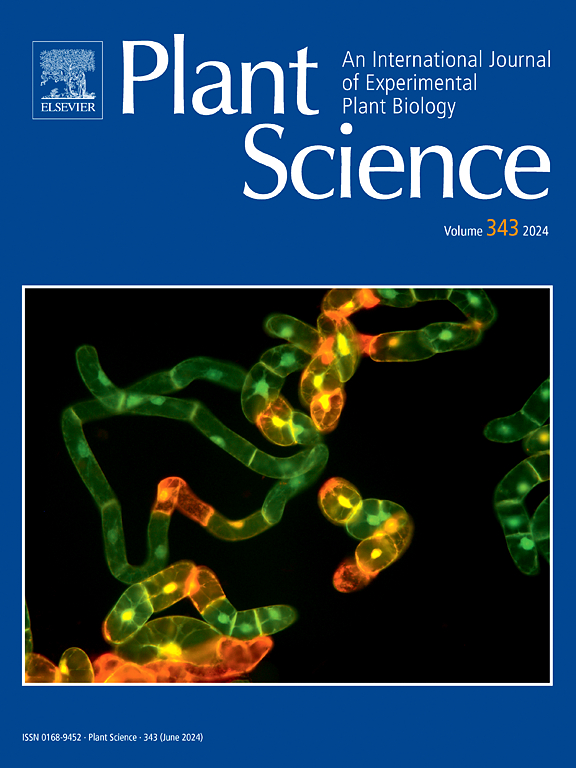miR393的过表达提高了甘蓝型油菜花青素的积累和渗透胁迫的耐受性
IF 4.2
2区 生物学
Q2 BIOCHEMISTRY & MOLECULAR BIOLOGY
引用次数: 0
摘要
甘蓝型油菜是世界范围内重要的油料作物。挖掘与甘蓝型油菜非生物胁迫耐受相关的基因,对提高甘蓝型油菜的适应性和产量具有重要意义。miR393是一个保守的miRNA家族,在调节植物生长、发育以及对生物和非生物胁迫的反应中发挥多种作用。在这项研究中,我们报道了miR393作为花青素生物合成的正调节因子,提高了油菜籽对氧化和渗透胁迫的耐受性。miR393的过表达上调了花青素生物合成基因和应激反应基因的表达,增加了花青素的积累,提高了活性氧清除能力。综上所述,miR393可用于甘蓝型油菜耐渗透胁迫的遗传改良。本文章由计算机程序翻译,如有差异,请以英文原文为准。
Overexpression of miR393 improves anthocyanin accumulation and osmotic stress tolerance of Brassica napus
Brassica napus L. is an important oil crop grown worldwide. Mining for genes related to abiotic stress tolerance is valuable to improve the adaptability and increase the cultivation of B. napus. miR393 is a conserved miRNA family that plays multiple roles in regulating plant growth, development, and response to biotic and abiotic stresses. In this study, we reported miR393 as a positive regulator of anthocyanin biosynthesis that improved rapeseed tolerance to oxidative and osmotic stresses. Overexpression of miR393 up-regulated the expression of anthocyanin biosynthetic genes and stress responsive genes, thus resulted more anthocyanin accumulation and improved ROS-scavenging capability. Overall, this study indicated that miR393 could be applied in genetic improvement of B. napus with osmotic stress tolerance.
求助全文
通过发布文献求助,成功后即可免费获取论文全文。
去求助
来源期刊

Plant Science
生物-生化与分子生物学
CiteScore
9.10
自引率
1.90%
发文量
322
审稿时长
33 days
期刊介绍:
Plant Science will publish in the minimum of time, research manuscripts as well as commissioned reviews and commentaries recommended by its referees in all areas of experimental plant biology with emphasis in the broad areas of genomics, proteomics, biochemistry (including enzymology), physiology, cell biology, development, genetics, functional plant breeding, systems biology and the interaction of plants with the environment.
Manuscripts for full consideration should be written concisely and essentially as a final report. The main criterion for publication is that the manuscript must contain original and significant insights that lead to a better understanding of fundamental plant biology. Papers centering on plant cell culture should be of interest to a wide audience and methods employed result in a substantial improvement over existing established techniques and approaches. Methods papers are welcome only when the technique(s) described is novel or provides a major advancement of established protocols.
 求助内容:
求助内容: 应助结果提醒方式:
应助结果提醒方式:


